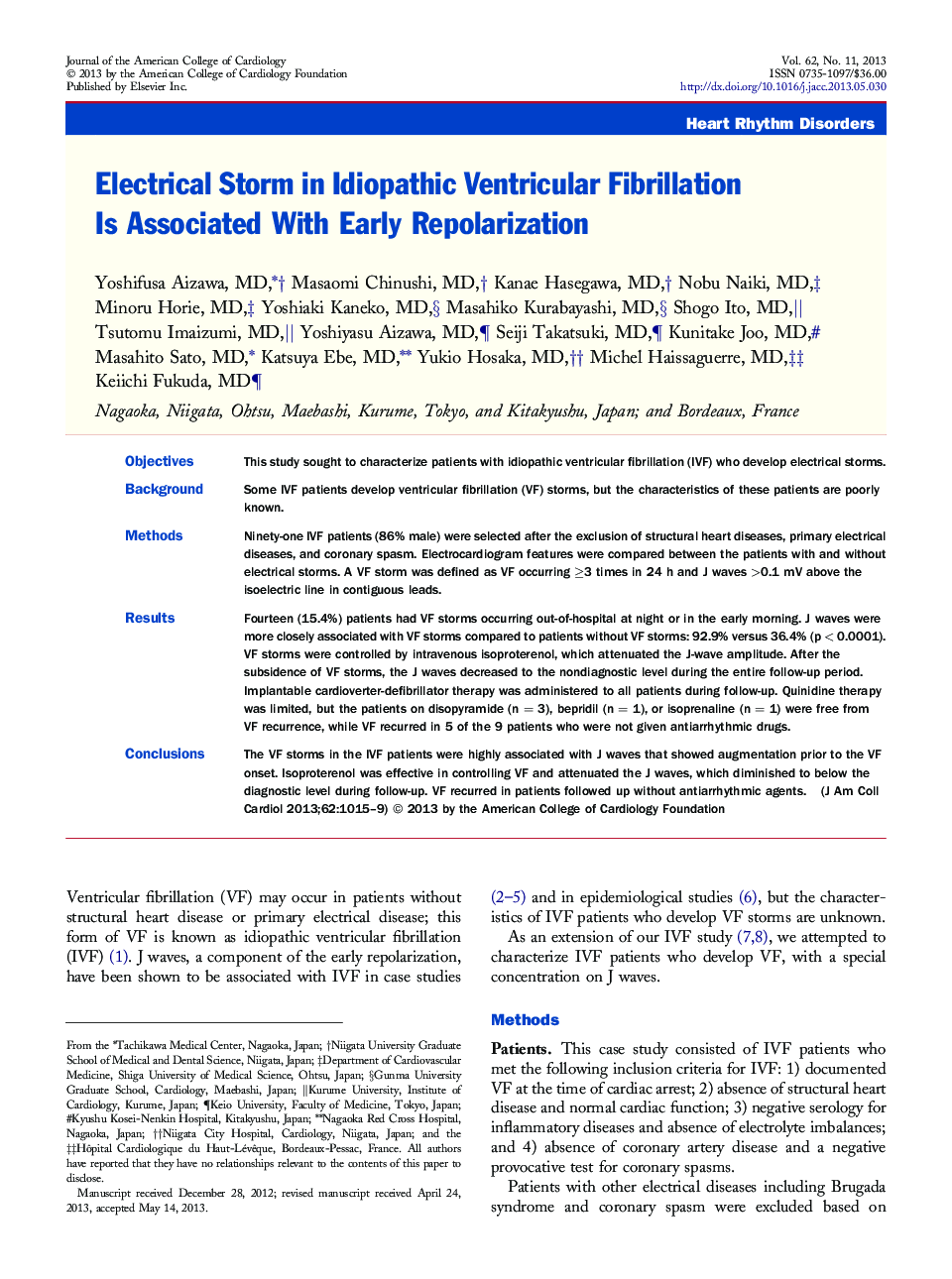| Article ID | Journal | Published Year | Pages | File Type |
|---|---|---|---|---|
| 2945538 | Journal of the American College of Cardiology | 2013 | 5 Pages |
ObjectivesThis study sought to characterize patients with idiopathic ventricular fibrillation (IVF) who develop electrical storms.BackgroundSome IVF patients develop ventricular fibrillation (VF) storms, but the characteristics of these patients are poorly known.MethodsNinety-one IVF patients (86% male) were selected after the exclusion of structural heart diseases, primary electrical diseases, and coronary spasm. Electrocardiogram features were compared between the patients with and without electrical storms. A VF storm was defined as VF occurring ≥3 times in 24 h and J waves >0.1 mV above the isoelectric line in contiguous leads.ResultsFourteen (15.4%) patients had VF storms occurring out-of-hospital at night or in the early morning. J waves were more closely associated with VF storms compared to patients without VF storms: 92.9% versus 36.4% (p < 0.0001). VF storms were controlled by intravenous isoproterenol, which attenuated the J-wave amplitude. After the subsidence of VF storms, the J waves decreased to the nondiagnostic level during the entire follow-up period. Implantable cardioverter-defibrillator therapy was administered to all patients during follow-up. Quinidine therapy was limited, but the patients on disopyramide (n = 3), bepridil (n = 1), or isoprenaline (n = 1) were free from VF recurrence, while VF recurred in 5 of the 9 patients who were not given antiarrhythmic drugs.ConclusionsThe VF storms in the IVF patients were highly associated with J waves that showed augmentation prior to the VF onset. Isoproterenol was effective in controlling VF and attenuated the J waves, which diminished to below the diagnostic level during follow-up. VF recurred in patients followed up without antiarrhythmic agents.
